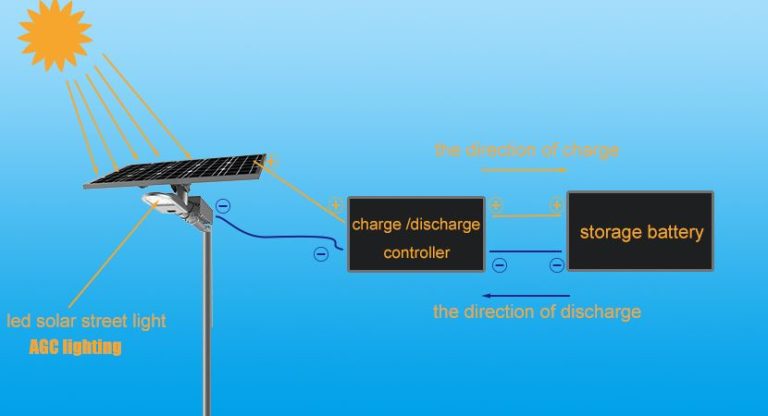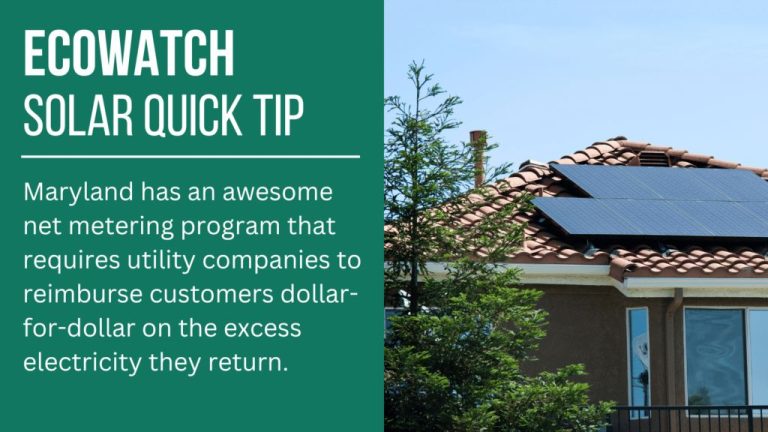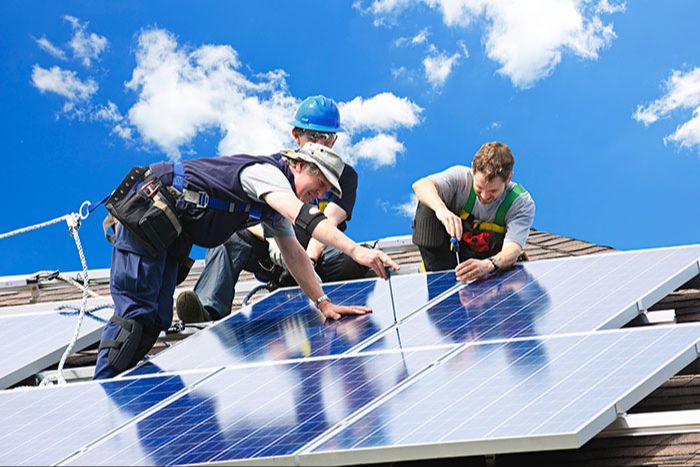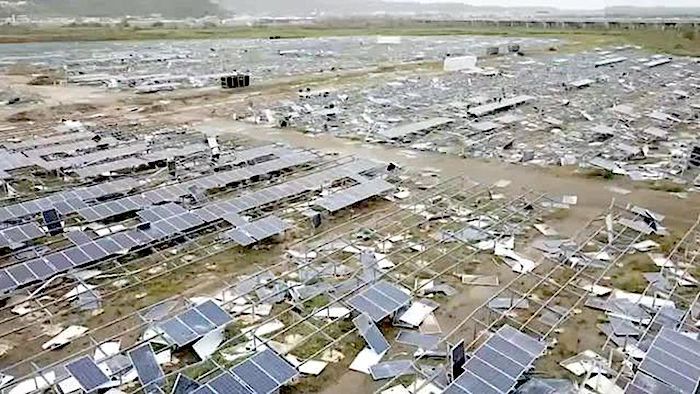What Does Passive Solar Heating Refer To Quizlet?
What is Passive Solar Heating?
Passive solar heating refers to techniques for harnessing the sun’s energy for heating purposes without the use of mechanical systems or external power. It relies on the structural design of a building and strategic placement of windows to naturally capture, store, and distribute solar heat passively.
This differs from active solar heating systems which use electrical pumps and controls to actively collect and move heat. Passive solar design aims to maximize solar gains during the winter while minimizing solar gains in the summer. This is done through proper solar orientation, appropriate window glazing and shading, thermal mass to store heat, and passive circulation to distribute heat.
The key principles of passive solar heating include:
- Orienting the building to face the equator (south in the northern hemisphere, north in the southern hemisphere)
- Placing the majority of the windows on the solar-facing side
- Using materials with thermal mass like concrete, stone, and tiles to absorb and slowly release heat
- Careful window glazing and shading to let in light and heat in winter, while blocking summer sun
- Vents and high interior ceilings to enable warm air circulation
By thoughtfully incorporating these passive solar techniques into architecture and construction, a building can naturally maintain comfortable temperatures with minimal need for active heating and cooling systems.
How Does Passive Solar Heating Work?
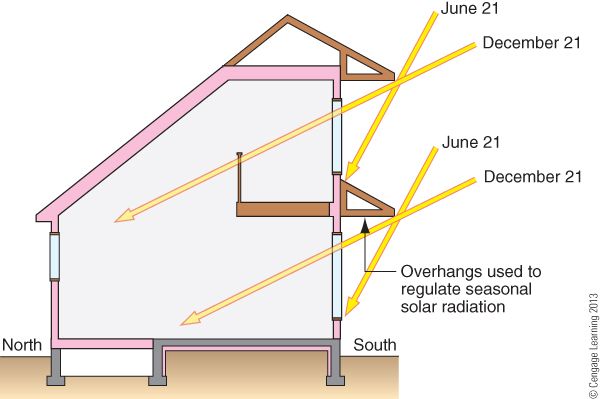
Passive solar heating utilizes energy from the sun to warm buildings naturally, without the need for any mechanical systems. It works through three main principles:
Using Solar Radiation Through Windows for Heat Gain
The sun’s rays entering through southern-facing windows provide direct heat gain to living spaces. Strategically placed windows allow sunlight to penetrate and heat up the interior. Windows are key elements for solar heat gain in passive solar design.
Thermal Mass to Absorb and Store Heat
Thermal mass in the form of concrete slabs, masonry walls, tiled floors, and other dense materials absorbs heat from sunlight during the day. The thermal mass later radiates the absorbed warmth at night when there is no direct solar gain.
Strategic Window Placement and Glazing
Window placement, size, orientation, and glazing types are optimized for maximizing solar heat gain in the winter while minimizing overheating in the summer. South-facing windows collect more heat from the low-angled winter sun.
Benefits of Passive Solar Heating
Passive solar heating provides several key benefits that make it an appealing option for many homeowners and builders.
Reduce Heating Bills
By maximizing natural sunlight and heat, passive solar design significantly reduces the need for conventional heating and lowers energy bills. The sun’s energy is free, and passive solar homes typically require 30-50% less purchased energy for space heating versus conventional buildings.
Improved Comfort
Not only are energy bills lower, but comfort levels are also enhanced. The free heating from sunlight helps maintain more consistent indoor temperatures compared to forced air systems which tend to have hot and cold cycles.
Lower Environmental Impact
Passive solar heating lessens the burden on fossil fuels to heat homes, reducing associated greenhouse gas emissions. Especially when coupled with renewable energy like solar panels, passive solar homes have a very low carbon footprint.
Passive Solar Heating Techniques
There are several techniques used in passive solar home design to capture heat and light from the sun:
Direct Gain
This is the simplest passive solar heating method. South-facing windows allow sunlight to directly enter and heat up the home’s interior. The sun’s warmth is absorbed by thermal mass surfaces like tile or concrete floors, which store heat during the day and release it at night when temperatures drop.
Indirect Gain
This technique uses south-facing windows to allow sunlight to heat up thermal mass that is separated from the living space. For example, a Trombe wall is a sun-facing masonry wall painted black and covered with glass panels. As sunlight heats the wall, the thermal mass radiates warmth into the interior space.
Isolated Gain
This involves capturing sunlight in an isolated area attached to the house. Sunrooms or greenhouses faced with glazing collect solar energy that can be transferred into the home through conduction, convection or small fans.
Thermal Storage Walls and Roofs
Massive walls or roofs made from concrete, masonry, adobe, or water tanks can absorb heat from the sun during the day. These thermal masses are insulated to slow heat loss and radiate warmth down into living spaces at night when heat is needed most.
Elements of Passive Solar Home Design
There are several key elements to incorporating passive solar design principles into a home:
Window Placement
Strategic window placement is crucial for passive solar heating and lighting. Windows should be concentrated on the south side of the home to allow low-angle winter sunlight to enter and heat your space. North-facing windows should be minimized to avoid heat loss. Installing larger windows on the south side helps maximize solar gain.
Insulation
Proper insulation is vital for trapping solar heat gained during the day and retaining it at night. Areas that commonly need extra insulation are attics, exterior walls, and foundations. High levels of insulation coupled with a tight building envelope will optimize passive solar heating performance.
Thermal Mass Materials
Thermal mass materials like concrete, stone, and tile absorb heat from sunlight during the day and release it slowly at night when temperatures drop. Locating thermal mass materials in spaces exposed to direct sunlight allows them to moderate indoor temperature swings.
Overhangs/Shading
External overhangs and shading devices help block high summer sun while allowing in lower winter sun. Overhangs are typically placed above south-facing windows to shade them from overhead summer sun, but allow low winter sun to pass under. Internal shading devices like blinds can also be adjusted seasonally.
Best Practices for Passive Solar Heating
There are several best practices that can help maximize the effectiveness of passive solar heating:
Building Orientation
Proper building orientation is crucial for passive solar design. In the Northern Hemisphere, homes should be oriented with the long axis running east to west. The majority of windows should face south to maximize solar gain in winter. Minimizing windows on the north side helps reduce heat loss.
Window Glazing and Frames
Installing high performance windows with low-emissivity (low-E) coatings allows solar energy into a home while reducing heat loss. Insulated window frames further help minimize conductive heat loss through the frames. Operable windows allow for cross-ventilation and passive cooling in summer.
Ventilation and Air Flow
Proper ventilation and air flow removes excess heat in summer while evenly distributing solar warmth in winter. Strategies like high and low vents, ceiling fans, and open floor plans facilitate effective air circulation.
Landscaping
Strategic landscaping helps regulate temperatures. Deciduous trees on the south side provide shade in summer and allow sunlight in winter after dropping leaves. Evergreen windbreaks on the north side protect against winter winds. Shrubs, trellises, and other structures provide seasonal shading.
Passive Solar Heating in Different Climates
Passive solar heating can be implemented in a wide range of climates, but the design considerations vary depending on the climate where the home is located.
Cold Climates
In cold climates, passive solar design focuses on maximizing heat gain. South-facing windows with minimal shading allow low winter sun to enter and heat up thermal masses like trombe walls, concrete or tile floors which then slowly release the absorbed heat. Extra insulation, high performing windows, and weather sealing are key to reducing heat loss. Roof overhangs, deciduous trees, and shading devices help block high summer sun when passive cooling is preferred.
Temperate Climates
Temperate climates have mild winters and warm summers ideal for passive solar. South-facing glass maximizes winter sun while roof overhangs provide shade in summer. Passive cooling like ventilation and shading trees is equally important for comfort during warmer months. Thermal mass regulates temperature swings throughout the day and seasons.
Hot Climates
In hot climates, minimizing heat gain is the priority. Shading devices, reflective coatings, roof overhangs, and vegetation prevent excessive solar gain. North-facing windows allow indirect light while shedding heat. Passive cooling via ventilation, evaporative cooling, and strategic landscaping are critical. Thermal mass still helps regulate temps, while insulation keeps cool air in.
Costs of Passive Solar Heating
Passive solar heating does require some upfront costs, but provides significant long-term savings compared to heating systems that rely solely on fossil fuels or electricity. Here is an overview of the costs:
Upfront Costs
There are some upfront expenses associated with passive solar heating techniques like building orientation, window placement, insulation, thermal mass, and overhangs/shading. However, many of these features can be incorporated into the initial design of a home for minimal extra cost. Retrofitting an existing home for passive solar can cost anywhere from a few hundred dollars for window films and curtains, up to tens of thousands for new windows and insulation.
Long Term Savings
While passive solar heating requires an initial investment, it can reduce heating bills by 25-75% compared to conventional heating systems. By tapping into free sunlight, you can dramatically cut energy costs during the winter. The upfront costs are usually recovered in 5-20 years through lower utility bills.
Cost Comparison to Active Solar Heating
Active solar heating systems that use panels, pumps and other equipment have higher upfront costs, typically ranging from $10,000-$30,000 installed. They also require more maintenance than passive solar. However, active solar may collect more heat energy and see faster payback periods of 4-8 years in some cases.
Cost Comparison to Conventional Heating
Conventional furnace/boiler heating systems have lower upfront costs than passive solar, often $5,000-$15,000 installed. However, fuel costs for natural gas, propane, oil and electric heat are expensive, with bills often exceeding $100+ per month in winter. Passive solar has a longer payback period but provides free heating after that.
In summary, passive solar heating requires an initial investment, but one that leads to excellent long-term savings by harnessing free and renewable sunlight. When designed properly, a passive solar home can provide most, if not all, heating needs even in cold climates.
Limitations of Passive Solar Heating
While passive solar heating can significantly reduce heating bills, it does have some limitations that need to be considered:
Supplemental heating may still be needed – Even the best passive solar home designs still require some supplemental heating from the electric or gas utility during extended cold and cloudy periods. Passive solar generally provides 30-70% of a home’s heating needs.
Doesn’t work as well in some climates – Passive solar heating works best in sunny, temperate climates. In cloudier northern climates, passive solar may only provide 20-40% of heating needs. In hot, humid southern climates, passive solar can overheat homes.
Orientation constraints – Passive solar home designs are heavily dependent on proper solar orientation, with the majority of glazing facing within 30 degrees of true south. Home sites or lots that don’t accommodate proper orientation can limit passive solar potential.
Future of Passive Solar Heating
Passive solar heating is poised to have a bright future with advanced materials, technologies, and the rise of net zero energy buildings. New smart glass technologies like electrochromic windows and microblinds will provide more dynamic solar control. Advances in phase change materials and thermal mass materials will greatly improve heat storage capabilities. Solar tracking skylights and collectors will increase solar gains. Growth projections for passive solar heating are very positive as green building becomes more mainstream. Passive solar design will play a central role in achieving net zero energy buildings due to its ability to reduce a building’s energy demands. With more innovations on the horizon and the urgency of climate change, passive solar heating will continue growing as an essential, low-cost way of harnessing renewable solar energy.

